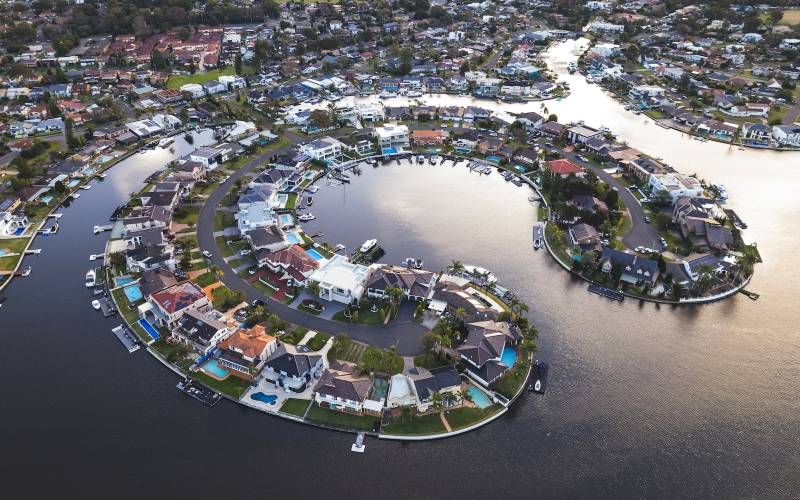Almost 12,000 ex-rental properties were put on the buyers’ market Australia-wide in the year to January, according to property analytics company Suburbtrends.
They accounted for 18% of listings, up from 16% the previous year.
The data shows landlords are selling up across 320 Australian suburbs where rental vacancy rates are already below 1%, further squeezing rental supply and putting upward pressure on rents.
Suburbtrends director Kent Lardner said around one in three of the ex-investment properties typically flow back into the rental market but the majority are being purchased by owner occupiers.
“The worsening affordability has driven first homebuyers into more affordable properties, such as rental apartments,” he said.
“The more this happens, the fewer properties will likely flow back into the rental pool.”
The spike in ex-rental listings as led to 34,701 bedrooms “lost” in the rental market last month alone, according to Mr Lardner.
State-by-state picture
The latest Suburbtrends data shows the number of investors selling their rental properties has more than doubled in Tasmania and the Northern Territory over the past 12 months and jumped 76% in the ACT.
Ex-rental listings shot around 50% higher in New South Wales and Victoria, but levels remained relatively stable on the previous year in both Queensland and Western Australia where ex-rentals account for 18% and 19% of all listings respectively.
The latest data is in line with figures of industry group Property Investment Professionals Australia which show more than 470,000 former private rental dwellings had been sold to existing homeowners or first homebuyers in the past three years since the 2021 census.
Why are landlords selling?
CoreLogic research director Tim Lawless says the widening gap between servicing an investor mortgage and rental income could be starting to squeeze some landlords.
The cost of servicing a $500,000 loan has lifted monthly repayments by $1,580 since interest rates started to rise in May 2022.
Rental income hasn’t kept pace, with monthly rent going up by $463 over that time.
“Given the large difference between servicing costs and rental income, there is a good chance that a growing portion of investors are feeling some financial pain and may need to sell their property,” Mr Lawless said.
“We could also be seeing investor confidence being dented amid a changing investment landscape. Investors now enjoy lower tax deduction benefits and some tenancy reforms are taking some control away from them.
"Talk of changes to taxation policies such as negative gearing could also be giving investors the jitters.”
Greens target negative gearing
The observation comes as the federal government gets its Help to Buy housing scheme through the House of Representatives this week, expecting it to be blocked in the Senate.
The Greens are refusing to back the legislation unless the government makes changes to negative gearing for new property investors.
Current negative gearing rules benefit around 2.4 million property investors, allowing them to claim losses on their investment properties against their personal income.
Treasury forecasts expect deductions for investment property expenses this financial year will hit $27.1 billion dollars, an estimated 62% jump from 2020-21 before interest rates hikes hit.
The Greens are calling for negative gearing to be limited to existing investment properties, progressively being phased out for second and more investments over five years.
The party claims 1.6 million owners with only one investment property would not be affected by their policy.
Australian Taxation Office data shows around 70% of Australian landlords own just one rental property.
Prime Minister Anthony Albanese has repeatedly ruled out negotiating with the Greens to get its Help to Buy scheme through both houses of Parliament.
Negative gearing not the only solution
Prominent property market researcher Louis Christopher, managing director of SMQ Research, warns against a “rip the band-aid off” approach to negative gearing changes.
Speaking on Savings.com.au’s The Savings Tip Jar podcast this week, Mr Christopher said he was a believer in changing negative gearing in a bid to ease the rental crisis, but as part of overall taxation change including stamp duty and land taxes.
“Bringing in a land tax [putting a tax on vacant land] I believe would increase liquidity in the marketplace,” he told The Savings Tip Jar podcast.
“Cut away stamp duty which would reduce transaction costs, therefore, people would be more easily able to pick properties which best suit their current lifestyle as opposed to empty nesters living in large dwellings.”
Mr Christopher said adjusting negative gearing to increase rental yields, more in line with overseas rental yields, would help build-to-rent schemes work more efficiently.
“At the moment, there’s a lot of talk about build to rent in this country but there’s actually not to date a whole lot of action occurring because many fund managers are struggling to make the numbers work as they currently stand.”
Mr Christopher said the current rental crisis is the worst he has seen in his 24 years of researching the property market.

Ready, Set, Buy!
Learn everything you need to know about buying property – from choosing the right property and home loan, to the purchasing process, tips to save money and more!
With bonus Q&A sheet and Crossword!



 Harrison Astbury
Harrison Astbury
 Harry O'Sullivan
Harry O'Sullivan